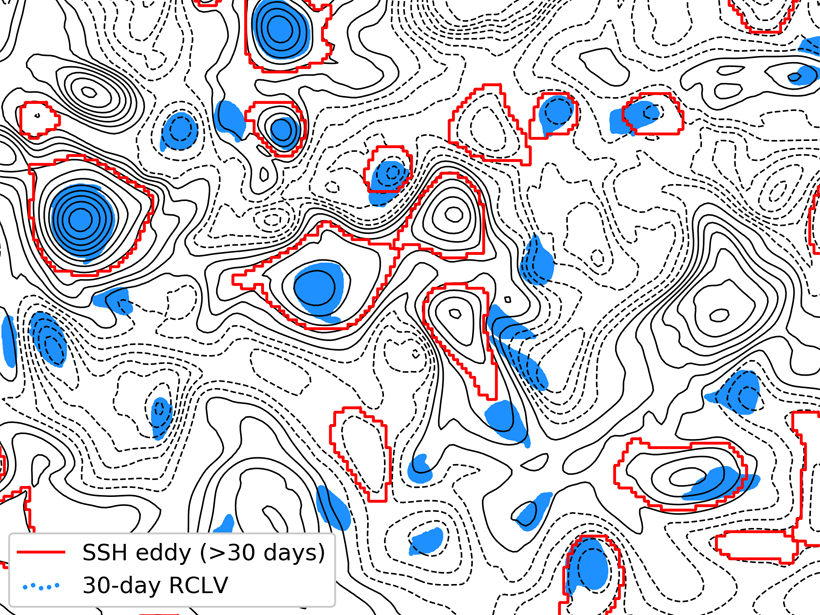Source: Journal of Geophysical Research: Oceans
Eddies, which are relatively small swirls of water that can travel long distances, play an important role in the transport of heat, nutrients, salt and other chemicals in the global ocean. Using principles of fluid dynamics, most studies of mass transport by ocean eddies apply the Eulerian specification, where the observer collects data from a fixed point as the water flows by.
However, Liu et al. [2019] also apply the Lagrangian specification, where the observer collects data while traveling along with the moving water parcel. Their comparison finds that both the directions and quantities of ocean transport can be significantly different depending on the specification used. Therefore, the global energy distribution and nutrient spread, which are closely related to the eddy transport deserve a careful revisit, as significantly different estimates may be expected.
Citation: Liu, T., Abernathey, R., Sinha, A., & Chen, D. [2019]. Quantifying eulerian eddy leakiness in an idealized model. Journal of Geophysical Research: Oceans, 124. https://doi.org/10.1029/2019JC015576
—Lei Zhou, Editor, JGR: Oceans
Text © 2019. The authors. CC BY-NC-ND 3.0
Except where otherwise noted, images are subject to copyright. Any reuse without express permission from the copyright owner is prohibited.

